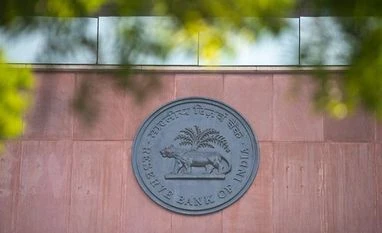The August review of Reserve Bank of India’s bi-monthly monetary policy turned out to be more interesting than expected due to three reasons: a) no unanimous voting on policy stance b) more than expected revision in inflation forecast for FY22 and c) announcement of the variable rate reserve repo auction – an indication that the central bank has started the gradual withdrawal of the ultra-loose monetary policy that was in place since the onset of the Coronavirus (Covid-19) pandemic.
As expected, there was complete unanimity among all the six members of the monetary policy committee (MPC) to keep the interest rate unchanged at 4%. However, on maintaining the accommodative stance, five of the six members voted in favour. Professor Jayanth Verma, disagreed.
“All members… except Prof. Jayanth R. Varma voted to continue with the accommodative stance as long as necessary to revive and sustain growth on a durable basis and continue to mitigate the impact of Covid-19 on the economy, while ensuring that inflation remains within the target going forward. Prof. Jayanth R. Varma expressed reservations on this part of the resolution,” the MPC statement said.
This was the seventh consecutive occasion when the central bank maintained a status quo on policy rates. The last rate revision was in May 2020 when the repo rate was reduced by 40 bps to 4%.
“From a head-in-sand approach on higher inflation so far, this policy meeting finally saw some implicit acknowledgement that continued disregard for inflation ultimately comes at the cost of policy credibility and markets eventually exacting higher risk premia. This was reflected in the dissent of one of the MPC members against the accommodative stance, and the RBI’s move to slowly start draining the liquidity swamp,” said Aurodeep Nandi, India economist, vice president at Nomura.
On the back two CPI-inflation prints – in May and June – which were higher than the upper bound of the RBI’s tolerance zone of 6%, the MPC revised the inflation forecast for the financial year, sharply upward. The inflation forecast was revised to 5.7% from 5.1% projected during the last policy meeting in June.
“The available data points to exogenous and largely temporary supply shocks driving the inflation process, validating the MPC’s decision to look through it,” RBI Governor Shaktikanta Das said.” A pre-emptive monetary policy response at this stage may kill the nascent and hesitant recovery that is trying to secure a foothold in extremely difficult conditions,” he added.
“We were expecting some sort of normalisation and that has happened. And the 5:1 accommodative stance is a little surprising because we were expecting a unanimous vote on the stance too. These are early signs of normalisation,” Anagha Deodhar, chief economist at ICICI Securities told Business Standard.
“Inflation target is a little on the higher side, maybe they are thinking ahead of the third wave there could be supply side bottlenecks and that is why inflation slightly could be on the higher side,” she said, adding that the policy is slightly bearish and not very dovish.
The announcement of variable rate reverse repo auction to suck out liquidity is the measure which the bond market interpreted as a sign that the central bank is moving towards policy nomalisation, though Governor Das categorically said the measure should not be read as reversal of the accommodative stance.
RBI has decided to conduct fortnightly VRRR auctions of Rs 2.5 trillion on August 13, 2021; Rs 3 trillion on August 27, 2021; Rs 3.5 trillion on September 9, 2021; and Rs 4 trillion on September 24, 2021.
“These enhanced VRRR auctions should not be misread as a reversal of the accommodative policy stance, as the amount absorbed under the fixed rate reverse repo is expected to remain more than Rs 4 trillionat end September 2021. Needless to add that the amount accepted under the VRRR window forms part of system liquidity,” Das said.
The bond market reacted following the announcement, as the yield of the 10 year benchmark government bond shot up to 6.24 per cent from 6.20 per cent.
“I think there is a small shift in gear whereby he [Shaktikanta Das] is probably just about preparing the market in the event that the third wave does not happen and growth which is slightly looking better than earlier anticipated according to the RBI, the RBI may actually be readying for normalizing some bits of the monetary policy,” said Indranil Pan, chief economist, Yes Bank.
“Having said that he is also trying to calm the markets by saying that we are still in relatively uncertain times and hence the continuation of the stance will extend till a durable and sustainable recovery in growth happens. It is both sides of the story, and to certain extent brings out the dichotomy that the RBI has, specially when it has upped its inflation forecast,” he said.
Unlock 30+ premium stories daily hand-picked by our editors, across devices on browser and app.
Pick your 5 favourite companies, get a daily email with all news updates on them.
Full access to our intuitive epaper - clip, save, share articles from any device; newspaper archives from 2006.
Preferential invites to Business Standard events.
Curated newsletters on markets, personal finance, policy & politics, start-ups, technology, and more.
)